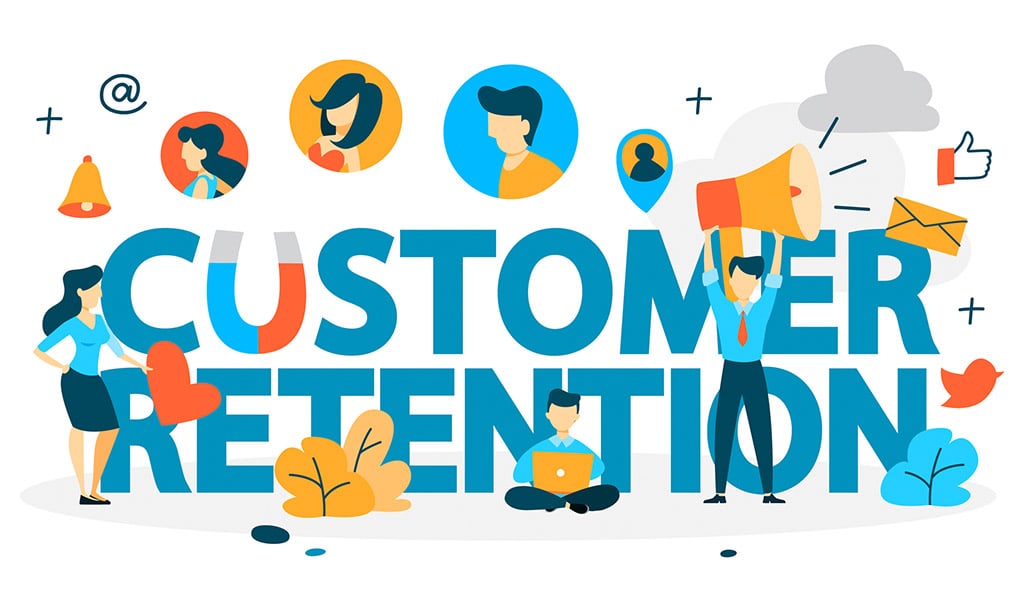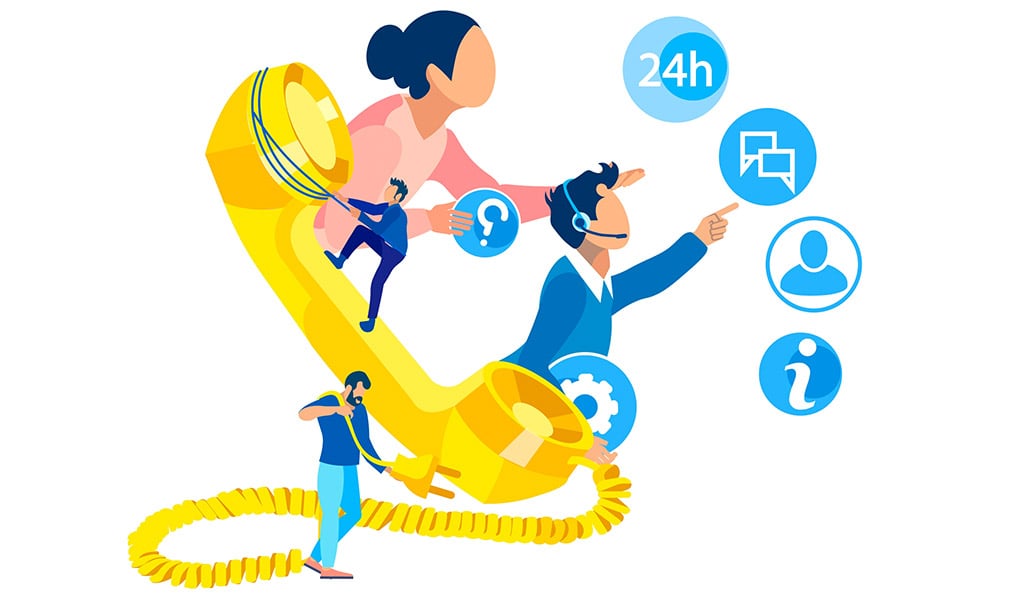
The global telecommunications industry had a value of $1.4 trillion in 2019. With the transition to 5G services set to take the world by storm in the next few years, the industry is expected to grow to even greater heights. It’s an exciting time for telecoms! 5G connectivity has the potential to transform the world we live in by making us more connected and making our devices more intelligent. We’re in the age of data where we are unlocking the secrets to the next generation of digital innovation every day. 5G will play a huge part in advancing us through the digital age.
However, for many telecoms’ companies, more advancement and innovation mean more competition for customers. It’s no secret that consumers in 2020 have exceedingly high expectations and an abundance of choice. While companies have always had to contend with customers telling their friends and family about their experiences, this is taken to another level in the digital age. Consumers take to the internet to leave reviews (both good and bad) and they share their experiences on social media. We live in a fast-paced world where you can get your shopping delivered within 24-hours, get entertainment on demand, and well, anything on demand. Consumers expect the same from every company they buy from, and telecoms is no exception here. Today we’re going to look at how to increase customer retention in the telecoms industry by offering a great customer experience to oust the competition. Let’s take a look.
Why Customer Churn is a Challenge in the Telecoms Industry
Traditionally, the telecoms industry has been known to offer subpar customer service. The UK Satisfaction Index for 2019 found that the telecoms sector came in second place for the worst-rated sector for customer service, with the transport sector being even worse. So, why are poor customer service and negative customer experience so prevalent in the telecoms industry?
Customer centricity – Telecoms companies tend to be large and offer a huge range of services. This inevitably leads to issues when customers want to get through to the right department and end up passed from agent to agent. Mix a lack of customer centricity with antiquated tech and you have a perfect recipe for poor customer service.
Consistent experience – One of the fundamental parts of offering excellent customer experience is keeping it consistent. It shouldn’t matter how the customer contacts the company, which department they reach, or which agent they speak to, they should have the same experience. When you add in service-engineers and brick and mortar shops into the equation, consistency can break down further.
Too big to fail – This is something a lot of large companies suffer from. When a company is large and agents have busy stress-filled days, some things get missed. Customer appointments aren’t processed. Long wait times happen. Complaints go unheard. In any business, some amount of negative feedback is expected. You can’t please everyone, right? True, but companies that suffer from the “too big to fail” complex mistakenly think that they can handle a fairly large amount of negative feedback. This was certainly truer in the past when consumers had fewer options and were more reluctant to switch out of fear of hassle or complications. Today? not so much. Consumers know they have options, and plenty of them.

Guide to Increasing Customer Retention in the Telecoms Industry
According to a report by Accenture, 77% of consumers retract their loyalty more quickly than they did three years ago. This means there is a real need to increase customer loyalty and make customers happy or risk losing them to competitors. When you also factor in that the cost of customer acquisition far outweighs the cost of customer retention, it’s clear why companies must be proactive about retention.
Personalization
Everyone loves rewards, but these rewards are only successful if they need the customers’ wants. According to one study, 53% of consumers say rewards are important to them to keep them loyal, but that rewards often aren’t relevant enough. So, how do you provide relevant rewards? The key is personalization.
You can create more personalized experiences for customers by segmenting them and tailoring your marketing, rewards, and communications to those specific segments. There are several ways to segment customers. For example, you can do behavioral segmentation, which might look something like this:
- Heavy data-consuming customers
- Sleepers (customers who barely use their mobile device)
- Home-based (customers who mainly use local calls and WiFi)
- International (customers who make a lot of international calls or use their device is a range of locations).
You can also segment customers on the value they bring to the company. Not all consumers bring the same value, and you may want to reward high-paying customers more than your average customer. Additionally, you can segment customers based on whether they are an individual consumer or a business (SME/enterprise). Businesses have different needs and priorities from individual customers. There are countless ways to you can segment customers, you just have to make sure that the segments are meaningful and will be useful to the teams that need to communicate with these customers.
Customer Loyalty Programs
Customer loyalty programs are a structured rewards program that encourages staying with the company in order to receive more benefits. Here’s how you create a successful customer loyalty program:
- Pick a great name – Customers are more likely to engage with the program if it has a catchy and memorable name.
- Don’t overcomplicate it – The reward program must be easily understandable. Consumers don’t want to engage with programs that are confusing because they aren’t sure what they will get from it. Make the rewards and the path to those rewards explicitly clear.
- Make it personalized!
- Market it to your customers – Reward programs only work if customers are using them. They can also be good marketing material for encouraging new customers to come in.
- Rewards must be proportional and in line with customers’ wants. If the value of your rewards is too low, then consumers might not engage with the program at all. Similarly, customers must be motivated by rewards. This means they must either be related to the service you offer (for example an upgrade to fiber broadband) or have wide appeal (like discounted movies).
- Rewards must be attainable – Again, customers won’t engage if the rewards seem out of reach. This could even backfire if consumers perceive the program as a shady marketing ploy that holds no real value.
Create a Frictionless Experience With an Omnichannel Approach
Omnichannel means providing a consistently good and seamless experience across all customer contact channels. In 2016, major telecoms giants Huawei and Vodafone teamed up to create an omnichannel solution framework. The solution aimed to create a seamless customer experience by remembering the context of information and utilizing customer persona data to deliver the best experience for that customer. The customer would be suggested the best communication channel for them. They would also be given personalized offers at key points in the customer journey. The project was a huge success for Huawei and Vodafone and has paved the way for omnichannel innovation in the telecoms space.
Omnichannel platforms are the future and are quickly outpacing multi-channel as the preferred method of customer engagement. Here’s why:
- Designing personalized experiences is easier and more effective.
- Seamless customer journey – Customer information travels with them through their journey, whether that’s when they are making a purchase or talking to customer service. Customers don’t need to repeat themselves and they won’t be passed to several departments because the right agent is routed directly to them.
- Omnichannel has a high ROI – Companies with a strong omnichannel approach experience a 9.5% year-over-year increase in annual revenue compared with 3.4% for companies with a weak omnichannel approach.
- Increased retention – less friction and more personalization lead to better customer experiences. Convenience is a huge commodity to consumers, and this shouldn’t be underestimated.

Utilizing Modern Technology
Technology is advancing rapidly, and new innovative solutions are hitting the market every day. You can’t adopt every new technology, but you can adopt the ones that show huge promise to transform the customer experience. Here are some of the things you can implement that will improve the customer experience and drive retention:
AI
- Voice recognition
- Call routing – Use text information, account data, website activity, and so on to determine the best agent for the job.
- Emotion analytics – Understand how the customer feels and rout them to the right agent.
- Chatbots – Address simple issues and offer the most appropriate products in a matter of seconds.
- Text analysis – Analyze text or conversation data to offer personalized products and services and anticipate future actions.
- Predictive maintenance – Identify issues before they arise and combat them quickly to avoid potential disaster.
Messaging Integration
Use WhatsApp, Facebook Messenger, or Live Chat to meet customer needs. The messaging services must be readily available and easy to find. Don’t try to encourage your customers to pick a different option by obscuring chat services behind many pages.
Knowledge Bases
Knowledge bases are a great tool for agents and empower them to do their job better. Relevant information about even the most complex of issues than be delivered straight to agents at the right time. This vastly reduces the time agents spend on calls and therefore provides a quicker solution to the customer. Consumers stick with companies that can solve their issues quickly and effectively. Agents that can problem solve quickly due to expert knowledge bases also inspire more confidence in the company. Customers get frustrated when talking to agents who seem unsure about how to fix their problems.
Agent Happiness and Productivity
Track the happiness and productivity of your agents to make sure they are performing to their full potential. This isn’t about reprimanding agents who fall short of targets. It’s about using data science to get to the bottom of why falls in productivity happen. The reason is often due to overstressed or unhappy employees who can’t work efficiently in that environment. By continually tracking agent happiness you can identify issues early and seek to address them. You can also prioritize calls so that happier and more productive agents are routed to customers with more complex problems that they will be better equipped to address than less happy agents.
Customer Satisfaction and Feedback
Run regularly customer satisfaction surveys and carefully monitor feedback. Is there something that keeps coming up in your negative reviews? Is this a sticking point for many customers? If so, then it’s time to address it. Create a list of the most common complaints (AI can help with this) and set an action plan for delivering change. These changes should be clearly communicated to customers along with the reasons for the change (“We wanted to give you what you wanted!”)